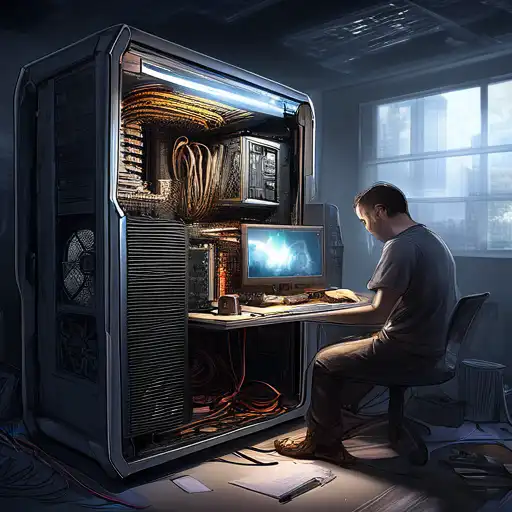Introduction to PC Building
Building your own PC can be a rewarding experience, offering both personal satisfaction and the opportunity to create a machine that perfectly fits your needs. Whether you're a gamer, a content creator, or just someone looking for a custom computing solution, this guide will walk you through the basics of assembling your own computer.
Why Build Your Own PC?
Building your own PC allows you to select each component based on your specific requirements, ensuring optimal performance and value. It also provides a deeper understanding of how computers work, which can be beneficial for troubleshooting and upgrades in the future.
Essential Components for Building a PC
Before you start, it's important to understand the key components you'll need:
- Processor (CPU): The brain of your computer, responsible for executing instructions.
- Motherboard: The main circuit board that connects all components.
- Memory (RAM): Temporary storage that your CPU uses to store data.
- Storage (SSD/HDD): Where your operating system, applications, and files are stored.
- Graphics Card (GPU): Essential for gaming and video editing, it renders images to your monitor.
- Power Supply Unit (PSU): Powers all components of your PC.
- Case: Houses all your components and protects them from dust and damage.
Step-by-Step Guide to Building Your PC
Now that you're familiar with the components, let's dive into the building process:
- Prepare Your Workspace: Ensure you have a clean, static-free area to work in.
- Install the CPU: Carefully place the CPU into the motherboard's socket.
- Install RAM: Insert the RAM sticks into the appropriate slots on the motherboard.
- Mount the Motherboard: Secure the motherboard inside the case.
- Install Storage: Connect your SSD or HDD to the motherboard and power supply.
- Install the GPU: Insert the graphics card into the PCIe slot on the motherboard.
- Connect the PSU: Attach the power supply to all components requiring power.
- Cable Management: Organize cables to ensure good airflow and aesthetics.
- Power On: Connect your monitor, keyboard, and mouse, then power on your PC to test.
Tips for First-Time Builders
Building a PC for the first time can be daunting, but here are some tips to help you succeed:
- Watch tutorial videos to familiarize yourself with the process.
- Double-check compatibility between components before purchasing.
- Take your time to avoid mistakes that could damage components.
- Don't force components into place; if something doesn't fit, you might be doing it wrong.
Conclusion
Building your own PC is an achievable goal for beginners, offering a custom solution that meets your exact needs. By following this guide and doing your research, you'll be well on your way to creating a powerful and personalized computer. Remember, the key to a successful build is patience and attention to detail.
For more information on selecting components, check out our ultimate component guide.
